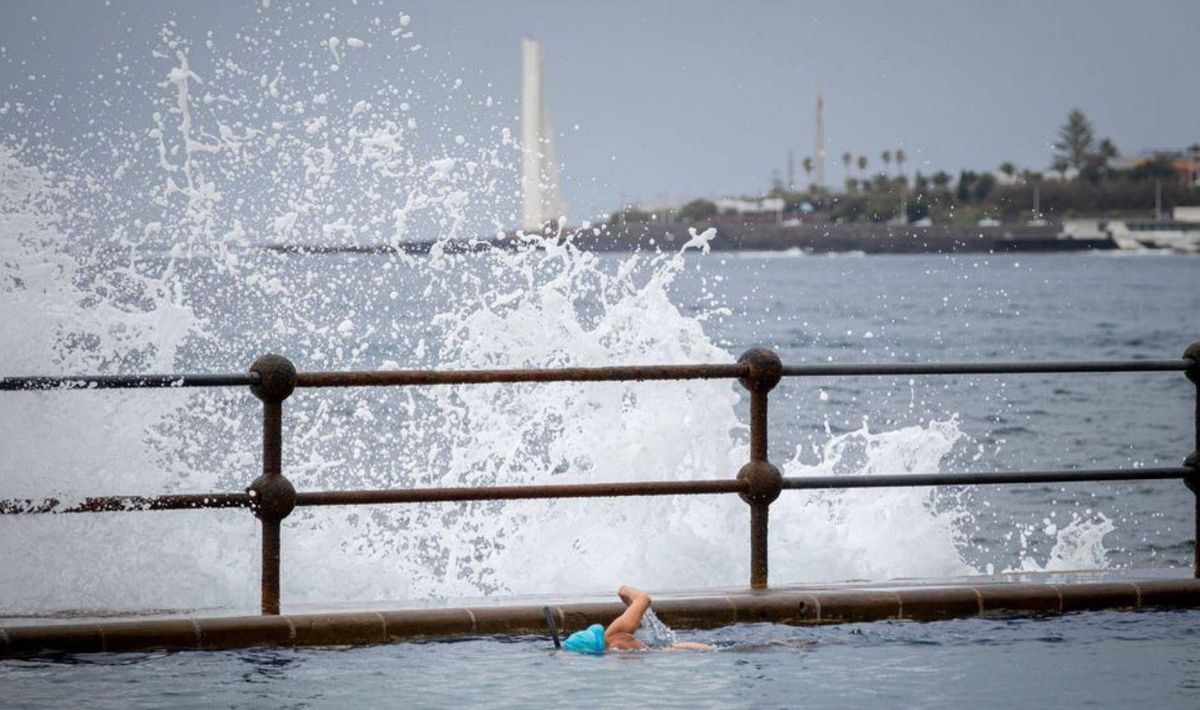The tail end of storm Dorothea, as it moved north across the Atlantic Ocean, impacted the Canary Islands in an uneven manner, with a more significant effect in the western province, particularly due to winds with gusts averaging 120 kilometres per hour. Today’s forecast indicates that it will remain active, prompting the Government of the Canary Islands to halt classes in Tenerife (a decision made late in the afternoon as initially, only the Metropolitan Area was affected), El Hierro, and La Gomera. The primary incidents over the weekend included falling branches and other debris, landslides on road inclines, sporadic power outages, and eleven redirected flights in Tenerife North and Villa de Mazo (La Palma).
The Ministry of Education, Vocational Training, Physical Activity and Sports opted for the cessation of school activities due to the prediction of strong wind gusts. The University of La Laguna also declared the suspension of all academic activities today for the same reason of heightened alert.
A Bit of Everything
Dorothea behaves, while still in these latitudes, like a contemporary storm that carries a myriad of phenomena: winds reaching up to 130 kilometres per hour in Malpaso (El Hierro) and 107 in Igualero (Valehermoso, La Gomera), lightning strikes, over 5,000 recorded on the night from Saturday to Sunday, and even Calima, particularly in the eastern islands where it produced beneficial rain for Gran Canaria, Lanzarote, and Fuerteventura.

The Day
Prudent Decision
Yesterday, public opinion varied widely. For instance, fans of Deportivo de La Coruña voiced their displeasure regarding the cancellation of the match against CD Tenerife at Heliodoro Rodríguez López “due to a little wind.” It was more than that. The majority accepted the decision and supported it, as the events concerning the tragic Dana in Valencia remain vivid in collective memory.
300 Incidents
The tally includes approximately 100 incidents on Saturday and over 200 on Sunday across the western province islands. In Tenerife, wind was inconsistently felt depending on the areas, with falling trees, fences, and posts along with landslides and falling rocks on roads such as TF-21 and TF-28. Furthermore, a local police officer in Tacoronte sustained minor injuries while responding to an emergency. Parts of Tejina (La Laguna), Tegueste, and El Tanque experienced power outages in the morning. By the afternoon, a tower fell in the La Romántica area of Los Realejos and certain locations in the municipality, such as Toscal Longuera, experienced power failures. In total, 147 incidents relating to blockages on public roads were addressed in the northern municipalities between La Tank and La Laguna, as well as areas to the west and south from Santiago del Teide to Arico. In several situations, landslides impacted parked vehicles, but fortunately, there were no injuries.
La Palma awoke yesterday to the brilliance of lightning that created spectacular views around the airport and throughout the eastern part of the island. In the Aridane Valley, some walls of banana plantations collapsed, while in Puerto Naos, wind speeds reached 90 kilometres per hour. However, what stood out significantly was the unusual heat with temperatures reaching 27 degrees in Tazacorte on Saturday and 29 degrees yesterday in various parts of the Valley. The interaction between cold air and warm Saharan air gives rise to phenomena that are increasingly becoming common, such as suspended dust that is rare for winter. The municipalities of Tijarafe, Garafía, and Los Llanos de Aridane reported 14 incidents pertaining to landslides on roads, falling trees, and light poles posed risks of falling onto the road, notably in El Paso, Barlovento, and Puntagorda. The affected roads included LP-213 and LP-109.

A person enjoys a swim in Bajamar (La Laguna) yesterday. / Andrés Gutiérrez/Arturo Jiménez
El Hierro felt the brunt of the wind yesterday morning. Especially affected was La Frontera, with downed power lines and gusts of up to 124 kilometres per hour and sustained winds of 100. By afternoon, Meridian Island entered a state of maximum alert due to the phenomenon. Approximately one hundred incidents were reported related to power supply disruptions during the early hours in Frontera and Valverde, which were restored within a few hours; landslides that caused the HI-55 highway to close, where traffic was reinstated, though HI-1 and the Llanía trail remain blocked; detachment of solar panels, street lights falling, and electrical wiring issues also occurred in El Pinar.
In La Gomera, alongside gusts in Igualero (107 kilometres per hour) and Arure (90), it is notable that around a dozen cases were managed in Valle Gran Rey and Vallehermoso due to fallen trees, Christmas decorations, and stones obstructing roads, as well as landslides on the Garajonay National Park road. The emergency services received reports of incidents regarding power outages in Hermigua and a small boat in distress. In Valle Gran Rey, the collapse of an awning resulted in injuries to one individual.
Severe Alert
Today, a maximum alert remains in effect due to strong winds in El Hierro, La Gomera, and the northern and western regions of Tenerife. The geographic relief of these islands contributes to enhancing the gusts significantly. They can reach, as seen yesterday, up to 130 kilometres per hour. The alert status persists in La Palma and in certain municipalities of Tenerife: Arona, Vilaflor, San Miguel, Granadilla, Arico, Fasnia, Güímar, Arafo, Candelaria, El Rosario, and Santa Cruz. Gran Canaria, Fuerteventura, and Lanzarote are under pre-alert conditions.















